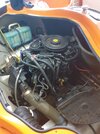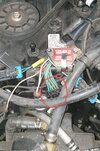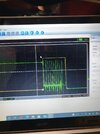No spark
Member
Hi all, I went to start my Seadoo 240 efi v6 and it wouldn’t start so I checked if there was spark : There is No spark on any of the 6 cdi coils. So I checked the cut off lanyard
The black and yellow wire and followed it all the way back to the ecm disconnected it and checked it for ground :No ground (until I pull the lanyard out) so I think it’s all good that side of the ecm?
Then I went to the black and green wire wire coming from ecm to cdi unit’s I understand that this goes to the pin B of all cdi units ? When I check this for ground :YES it is grounded . I’m now not sure what to check now. Help would be much appreciated.
The black and yellow wire and followed it all the way back to the ecm disconnected it and checked it for ground :No ground (until I pull the lanyard out) so I think it’s all good that side of the ecm?
Then I went to the black and green wire wire coming from ecm to cdi unit’s I understand that this goes to the pin B of all cdi units ? When I check this for ground :YES it is grounded . I’m now not sure what to check now. Help would be much appreciated.






